AMD vs. Intel: Battery Life Investigated
by Jarred Walton on August 5, 2009 5:00 PM EST- Posted in
- Laptops
Laptops: Comparing Apples to Apples
Anyone looking to go out and purchase a new laptop is almost certainly interested in a couple things: how much does it cost, and what sort of battery life can you expect? Answering those questions for any specific laptop is simple enough, provided we can get a sample unit for testing. However, it becomes more difficult to answer these questions when you're looking at the big picture -- i.e. AMD vs. Intel laptops. The pricing question is easier: laptops using AMD platforms are (usually) cheaper than equivalent Intel platform laptops. That's simple enough: you're paying more for the Intel brand. But what about battery life?
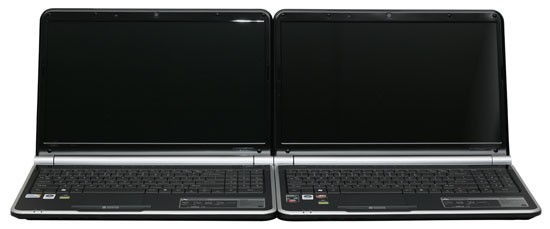 |
We have long tried to answer that question, but the best we could do up until this point was to compare "similar" laptops. Getting the same LCD, hard drive, optical drive, and most importantly battery has been very difficult -- so difficult that we have not been able to do it. A few manufacturers offer competing AMD and Intel laptops with very similar specifications, but no one seemed willing to send their AMD-based system. Were they afraid of cannibalizing sales of their more expensive laptops? Did they just think that an AMD-based laptop wouldn't stand up well in our testing? We don't know for sure, but what we do know is that Gateway has stepped up to the plate and sent us two all but identical laptops. We've been busy the past week or two putting the laptops through our test regimen, and we will have the full review shortly. In the meantime, we thought you might be particularly interested in the battery life you can expect.
Here's a quick look at the two laptops. On top is the AMD-based Gateway NV52, and below it is the Intel-based Gateway NV58.
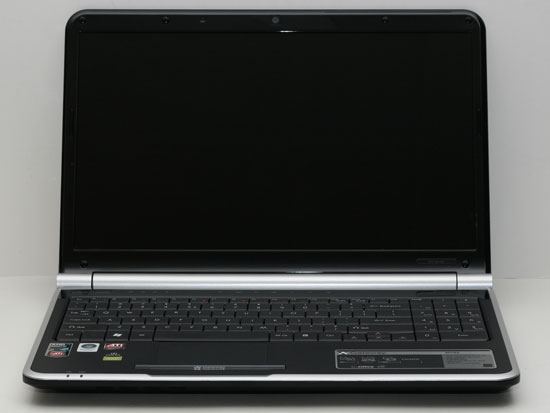 |
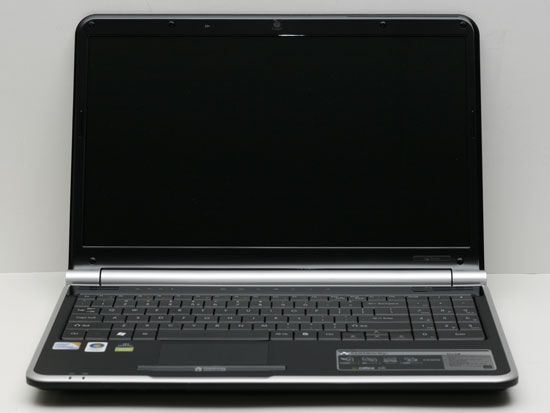 |
Here's a second look, focusing on the keyboards. Once again, AMD is above and Intel is below.
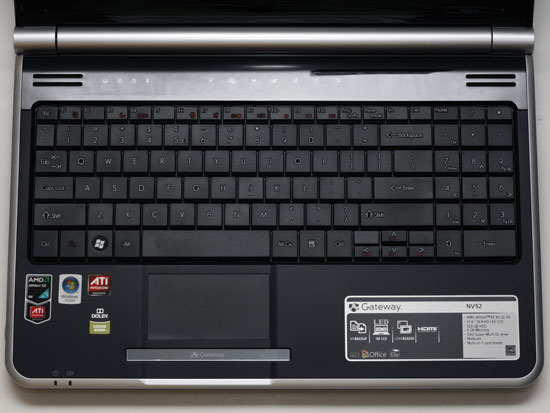 |
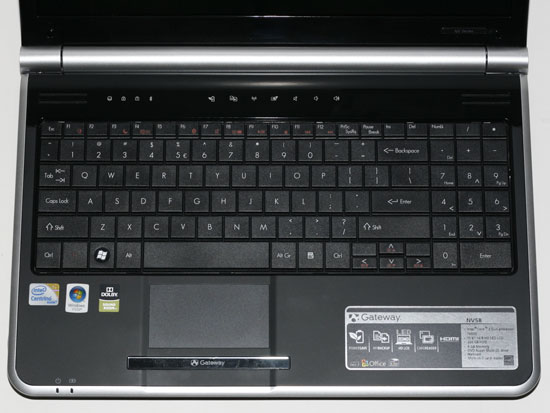 |
The chassis are identical from the outside, and everything else is the same as well other than the motherboard, chipset, and processor. Both come with 4GB DDR2 memory, a 15.6" 1366x768 LED backlit LCD, 320GB 5400 RPM hard drive, and a DVDRW. Both also include Gigabit Ethernet and 802.11n WiFi (Intel WiFi Link 5100 for the NV58 and Atheros AR928X for the NV52). In fact, even the CPUs have the same 2.1 GHz clock speed -- not that CPU clock speed matters -- as well as 35W TDP ratings -- not that that matters either, as we'll soon see. On the AMD side, we have the QL-64 (65nm, 2.1GHz, 2x512K L2, 3600MHz HyperTransport bus), and on the Intel laptop we have the T6500 (45nm, 2.1GHz, 2MB shared L2, 800MHz FSB). We should also mention that the NV58 costs more than the NV52, $500 for the NV52 and $580 for the NV58. What does the extra $80 buy you?
We will have performance numbers in our upcoming full review, but considering this is a match between AMD's old dual-core Athlon 64 X2 (K8 architecture) and Intel's Core 2 Duo, you can probably already guess the results. Intel is quite a bit faster in all of the CPU benchmarks. On the other hand, the AMD platform comes with much better integrated graphics, so if you would like to do a bit of 3D gaming on occasion (at low to medium detail levels) AMD easily wins the graphics benchmarks. Now let's look at battery life.










80 Comments
View All Comments
ltcommanderdata - Wednesday, August 5, 2009 - link
It's highly unlikely that a TSMC 55nm process has an advantage over Intel's 65nm process other than size.http://www.realworldtech.com/page.cfm?ArticleID=RW...">http://www.realworldtech.com/page.cfm?ArticleID=RW...
In fact, in terms of performance, TSMC's originally planned 45nm process would be required to match Intel's 65nm process. Of course, TSMC has since skipped 45nm and went directly to 40nm. Still, Intel's processes tend to be a generation ahead of the more generic processes at TSMC, with preliminary data on TSMC's 32nm process showing it behind Intel's 45nm process in terms of performance. Which of course means that Intel making Arrandale's IGP or Larrabee on 45nm won't be a performance limitation, rather it's all up to design.
Alexstarfire - Thursday, August 6, 2009 - link
This isn't about performance, it's about power usage. I'm pretty sure that a 32nm process is going to generally use less power than a 45nm process regardless of performance or design. I could be wrong though. I don't exactly know all the ins and outs of microprocessors.ltcommanderdata - Thursday, August 6, 2009 - link
I'm pretty sure in this case performance and power are closely correlated because you can trade off between the 2. I believe they mean performance in a manufacturing process by describing how much current the transistor can transfer when it's on at a given drive voltage along with how much current the transistor leaks when it's off. Of course, higher on current (to do work) and lower off current (leakage) is better. In the case of the graph, it's drive voltage over on current so a higher on current will result in a lower number. Hence, Intel's 45nm process can have a higher on current for a given voltage than TSMC's 32nm process. This is important for high performance processors. For low-power processors, this also means that Intel can use lower drive voltage to save power (like undervolting), while still maintaining a higher current to do work than their competitors' process.imgod2u - Wednesday, August 12, 2009 - link
This isn't necessarily true. Keep in mind the FET is inherently a non-linear device. There is a limit (especially for digital logic) where you simply can't lower the operating voltage anymore without drastically affecting slew rates to the point of breaking the device.This is why multi-Vt processes are available instead of just putting the slower paths on a lower VDD rail. The gate dielectric thickness (tox) is offered in various levels to balance between performance and leakage. It's then up to the designer to choose which Vt device to use in which gate.
Now it could be that Intel's 45nm (which uses both a high-k gate dielectric as well as gate-replacement) is simply superior to TSMC's 32nm all around. I've not looked up the data. But higher-performance is usually inversely proportional to low-power capabilities of the process itself.
Pneumothorax - Thursday, August 6, 2009 - link
Smaller process does not always equal smaller power usage. Don't you remember Presscot? (The first 90nm P4, AKA pressHOT) Used more power than the preceding generation due to power leakage and design.ltcommanderdata - Thursday, August 6, 2009 - link
Well of course process isn't the only factor, but I mentioned it since Jarred specifically mentioned that TSMC's 55nm process might help provide an advantage over Intel's 65nm process. In this case, it looks like Intel's 65nm process would have been competitive against TSMC's canceled 45nm process, so TSMC's 55nm process would be behind.DigitalFreak - Wednesday, August 5, 2009 - link
Can't say that I'm at all surprised, for exactly the reasons you mentioned.Voldenuit - Saturday, August 8, 2009 - link
Agreed. It's been conventional wisdom for a long time now that intel laptops outlast amd laptops, but it's always good to verify (and check up on) the claim.Next: how about OS contributions to battery life?
I'd love to see battery life on the same notebook in WinXP vs Vista vs Win7. If AT could throw in OSX via hackintosh, that would be even more interesting, as you guys have found that OSX is superior to Windows in battery life on Apple hardware, but it would be interesting to ascertain if that is due solely to the OS vs BIOS/fimrware/more low level stuff.
I just got back from an intercontinental flight, and was able to eke close to 9 hrs out of my Thinkpad X300, using the 6-cell battery and 3-cell Ultrabay battery (albeit with wifi off; mainly reading and some minor document editing).
JarredWalton - Saturday, August 8, 2009 - link
The one time I looked into XP vs. Vista battery life, it actually wasn't substantially different on the same laptop (within a few percent, which is margin of error on battery tests). I may try to do a WinXP vs. Vista vs. Win7 comparison in the near term, but OSX is sort of difficult to do properly with a Hackintosh. I've heard Apple plays with the CPU voltages a bit more using some direct access to the hardware, but honestly I'm not sure Windows PCs ever fully enter deep C-states.Stay tuned... full review is still pending, and then I'll see about playing with other OSes.
Voldenuit - Tuesday, August 11, 2009 - link
Neat. Looking forward to it.Course, I'm one of those users who "cheat" w/ undervolting and forcing C-states with RMClck (or NHC depending on my fancy). ^_^.